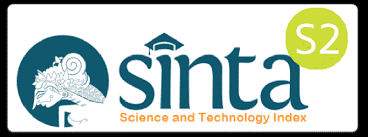Agam Regency Toddlers Stunting Incidents From 2018 to 2022
DOI:
https://doi.org/10.35730/jk.v14i3.1118Keywords:
Determinants, Spatia, Stunting, Agam Regency, ToddlersAbstract
Background: Stunting is a dietary problem that can have negative effects on IQ, raise the likelihood of non-communicable diseases, and impede future output. According to the findings of the 2022 SSGI, the occurrence of stunting in Agam Regency is 24.6%, surpassing the national occurrence of just 21.6%.
Objective: The purpose of this study is to ascertain the prevalence of stunting in toddlers and provide a geographical representation of Agam Regency from 2018 to 2022.
Method: This study employed an ecological approach, utilizing secondary data obtained from the health profiles and nutritional reports of the Agam Regency Health Department spanning the years 2018 to 2022. The study sample comprised of young children who have undergone stunting in Agam Regency during the years 2018 and 2022. The sample selection employed the total sampling technique.The analysis encompassed both univariate and spatial analysis techniques.
Result: The univariate analysis shows that the occurrence of stunting increased in 2020 and then decreased from 2021 to 2022. The highest frequency in 2018 was documented at a rate of 28 per 100 youngsters. The Agam District Health Service should improve cooperation with many initiatives and interconnected sectors relating to environmental health.References
WHO. Childhood Stunting. Context, Causes and Consequences WHO Conceptual framework. 2013;9(September).
Nirmalasari NO. Stunting Pada Anak : Penyebab dan Faktor Risiko Stunting di Indonesia. Qawwam J Gend Mainstreming. 2020;14(1):19–28.
Indah F. pemetaan faktor resiko stunting berbasis SIG dikabupaten jember. Digit Repos Univ Jember. 2021;(September 2019):2019–22.
(BAPPENAS) BPPN. Rencana Aksi Nasional Pangan dan Gizi 2011-2015. 2006;
WHO. Reducing Stunting [Internet]. 2018. 1–25 p. Available from: https://www.who.int/nutrition/publications/severemalnutrition/reducing-stunting-children-equity/en/ (diakses pada tanggal 31 Maret 2020)
Afiatna M. Perkembangan Motorik Kasar dengan Tingkat Keparahan Stunting ( Studi pada Anak Sekolah Dasar ) The Gross Motor Development with Severity Level of Stunting ( A Study. 2022;6(1).
Fadillah nur alda. Analisis Faktor risiko kejadian stunting pada balita usia 6 bulan - 23 bulan di puskesmas pekkae kecamatan tanete rilau kabupaten barru tanun 2020. 2021;6.
Kementrian Kesehatan Republik Indonesia. Laporan Riskesdas 2018 Nasional.pdf. 2019. p. 674.
Kemenkes RI. Cegah Stunting, itu Penting. Pus Data dan Informasi, Kementeri Kesehat RI [Internet]. 2018;1–27.Available from: https://www.kemkes.go.id/download.php?file=download/pusdatin/buletin/Buletin-Stunting-2018.pdf
. Presiden Republik Indonesia. Rencana Pembangunan Jangka Menengah Nasional. Peratur Pres Republik Indones Nomor 18 Tahun 2020. 2020;2020–4.
Kemenkes RI. Hasil Studi Status Gizi Indonesia (SSGI ) Tingkat Nasional, Provinsi, dan Kabupaten /Kota Tahun 2021. 2019.
Anita Sampe, Rindani M, Mirania. Hubungan Pemberian ASI Eksklusif dengan Kejadian Stunting pada Anak Balita. Matern Neonatal Heal J. 2022;3(1):7–11.
Zurhayati Z, Hidayah N. Faktor Yang Berhubungan Dengan Kejadian Stunting Pada Balita. JOMIS (Journal Midwifery Sci. 2022;6(1):1–10.
Zairinayati, Purnama R. Hubungan Hygiene Dan Sanitasi Lingkungan. Babul ILmi_Jurnal Ilm Multi Sci Kesehat. 2019;10(Nomor 1).
Nisa SK, Lustiyati ED, Fitriani A. Sanitasi Penyediaan Air Bersih dengan Kejadian Stunting pada Balita. J Penelit dan Pengemb Kesehat Masy Indones. 2021;2(1):17–25.
Sutriyawan A, Rahayu S, Kurniawati RD, Habibi J. Disease With Stunting Incidence in Toddlers : J Midwifery Vol 8 No 2 Oktober 2020. 2020;8(2):1–9.
Wanda YD, Elba F, Susanti AI, Rinawan FR, Masyarakat IK, Kedokteran F, et al. Riwayat Status Imunisasi Dasar Berhubungan Abstract History of Basic Immunization Status Associated With the Event of Stunting. J Kebidanan Malahayati. 2021;7(4):851–6.
Irwansyah E. Sistem Informasi Geografis : Pronsip Dasar dan Pengembangan Aplikasi [Internet]. Digibooks. 2013. 237 p. Available from:https://www.researchgate.net/publication/306110317_Sistem_Informasi_GeografisPrinsip_Dasar_dan_Pengembangan_Aplikasi
Ariandi M, Agustini EP. Sistem Informasi Geografis Penyebaran Penduduk Di Kecamatan Rambutan Untuk Analisa Di Bidang Kependudukan. J Ilm MATRIK. 2018;20(1):61–74.
Maantay J. Mapping environmental injustices: Pitfalls and potential of geographic information systems in assessing environmental health and equity. Environ Health Perspect. 2002;110(SUPPL. 2):161–71.
Fadliana A, Darajat PP. Pemetaan Faktor Risiko Stunting Berbasis Sistem Informasi Geografis Menggunakan. J ikraith-informatika [Internet]. 2021;5(3):91–102.




